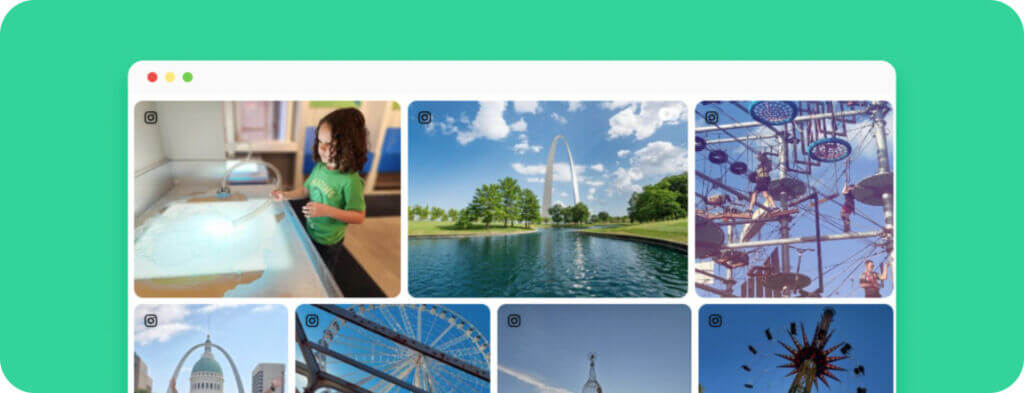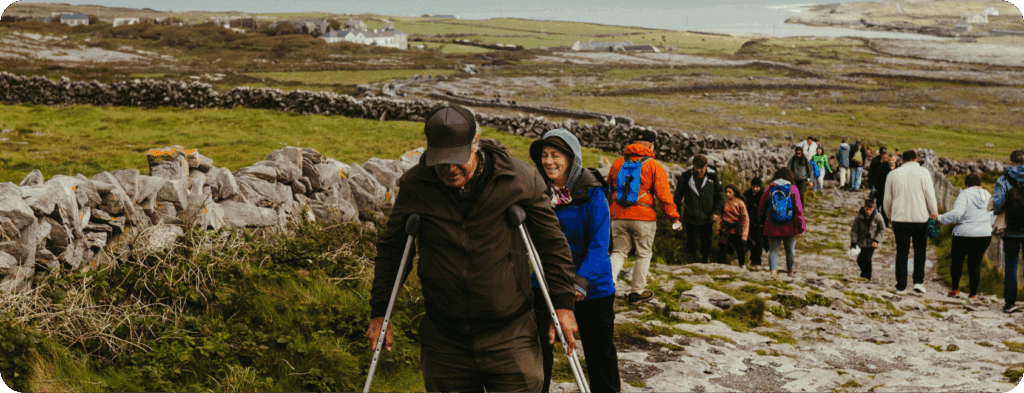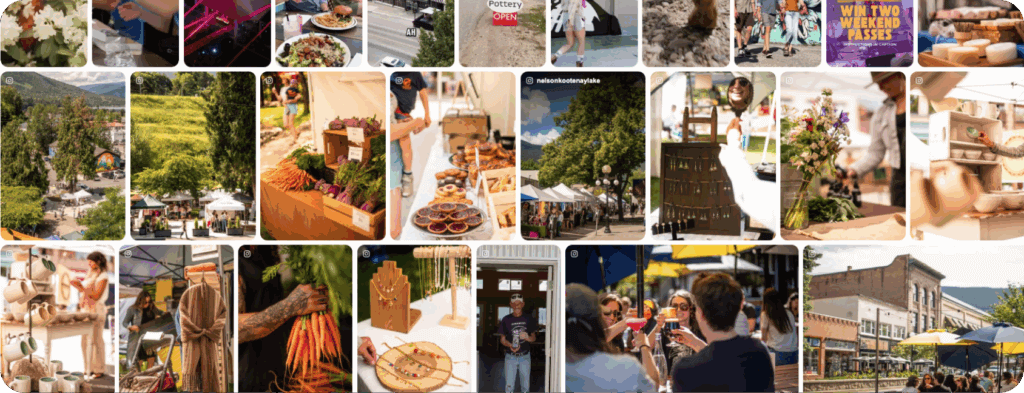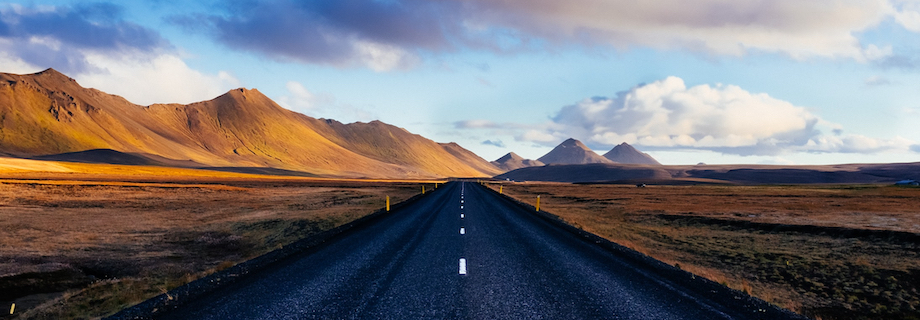
People with trip plans for the rest of the year want to spend time with loved ones, get away from crowds, and enjoy nature. But they also want to experience new places and excitement in their travels.
Road trip itineraries are a great way for DMOs to attract travelers from drive markets (even if they’re not your traditional audience), provide safe and structured ways to experience your destination, and promote things to do and see in your area.
User-generated content is a must-have as part of your road trip itinerary. Real-time photos and videos show travelers what’s open and available, and inspires them to visit in a realistic way. As restrictions change, you can also easily update your itineraries with the content that best represents your destination right now, helping reinforce your trustworthiness as a DMO.
Here are three UGC-powered road trip itineraries for DMOs of any size.
1 | Creating regional road trips on your blog
Estimated completion time: 1 – 2 days per post
Best for: Small to medium-sized DMOs
Tools required: CMS
CrowdRiff features used: Web galleries, Connect
When the COVID-19 pandemic hit, Melea Hames, the Social Media Manager at Alabama Mountain Lakes Tourist Association, knew she needed a way to keep both locals and travelers dreaming.
“I thought, what people want right now is hope. They want to know that it’s not always going to be this way and they want things to do when we’re able to travel again.”
She created a blog series called “when business returns to usual.” She divided the 16-county region into four posts: northwest, north, south, and northeast. Each post included a short itinerary using UGC galleries powered by CrowdRiff to showcase attractions and activities along each route.
Even if the businesses weren’t open, she still advertised them, noting to travelers to check each spot before traveling there.

Hames says CrowdRiff was essential for sourcing local content to use in the galleries. She used a mix of hashtags, photography created through the local ambassador program, and partner content pulled into their library through Connect to populate the galleries with fresh, relevant content for each region.
Tips for creating regional road trip itineraries on your blog:
- Bring out the identity of each region. For example, Hames says the northwest section is known as the “music area,” since it has all the recording studios that are world-famous in the Alabama Music Hall of Fame. Be sure to highlight, and play off that unique angle in your post(s).
- Experiment with different length road trips. Some people might just be looking to explore for a weekend (or even a few hours in the middle of the week), while others are looking for a longer getaway.
- Try creating an Instagram Story highlight to promote each road trip. Don’t forget to tag local businesses!
2 | Building interactive, route-based road trips as part of your website
Estimated completion time: 2 weeks – several months, depending on the complexity of the design
Best for: Medium to large-sized DMOs
Tools/resources required: CMS, web developer
CrowdRiff features used: Web galleries, Google Locations, CTAs, Connect
Tourism Vancouver Island created a road trip experience using UGC galleries and interactive Google Maps as part of their website.
All of the popular routes end or circle through Vancouver Island. Each route shows the distance and time between each stop so travelers can plan accordingly.
The team uses CrowdRiff to source the UGC featured in the guide. They gather content from local hashtags and Connect to pull Stories, @mentions, and tags from their DMO partners directly into their CrowdRiff library.
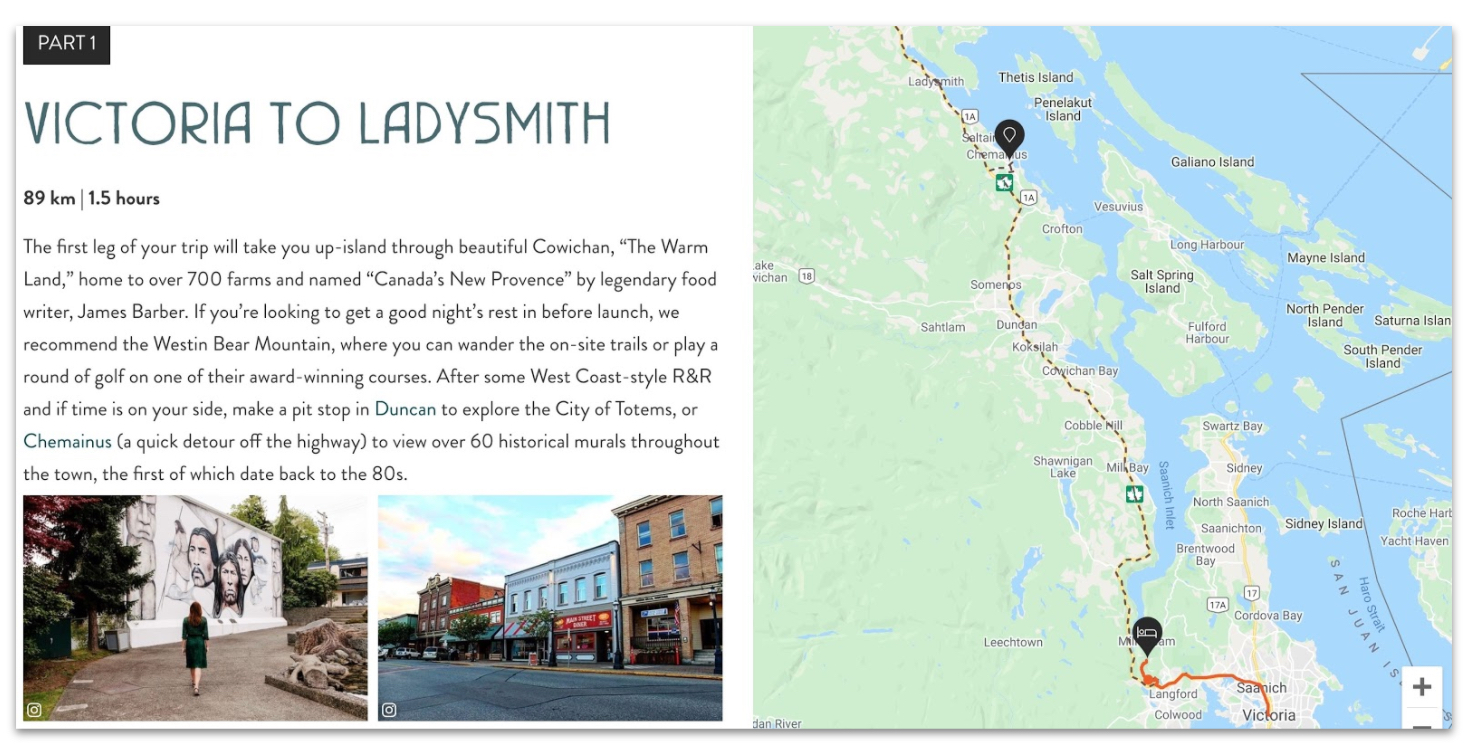
If you don’t have a developer on your team to make the map interactive, consider embedding a Google Map with each stop as a location pin along the way.
Tips for building route-based road trips as part of your website:
- Use SEO tools to learn what road trip phrases people are searching for that are relevant to you. Ubersuggest is a free tool you can use for your research.
- Adding your road trip as part of your main website navigation may take more planning upfront, but will help your content be more discoverable over time. Depending on how you structure your blog, your posts may require more upkeep to stay relevant.
- If you can, add visual calls-to-action on your photos and videos. This helps people book experiences when they’re feeling most inspired. Include your local hashtag on the posts to encourage more UGC creation.
3 | Launching a website for regional and interest-based road trips
Estimated completion time: 2 weeks – several months, depending on the complexity of the design
Best for: Large DMOs (state-level)
Tools/resources required: Web developer or agency partner
CrowdRiff features used: Web galleries, Google Locations, CTAs, Connect
Earlier this summer, Visit Indiana launched a new website to help visitors customize road trips throughout the state and locals reconnect with familiar spots. The site features 22 road trips, an interactive map for itinerary building, and an interactive quiz to help people through the decision-making process.
Some road trips are regional (Indiana State Parks — North), while others are interest-based (A Couples Getaway in South Bend). To help manage travelers’ expectations, messaging on the site clearly states, “visitors will need to visit each destination’s website for up-to-date information.”
On each road trip page, Visit Indiana displays information about the trip, suggested attractions and businesses along the way, and overnight stays.

Some of the photos also include calls-to-actions so people can read more about each experience or book them directly.
They feature the road trip planner above-the-fold on the homepage of their website and have promoted the campaign to their partners in an email, on social media, and on their blog.
Tips for launching a road trip website:
- The more road trips, the merrier. This gives your travelers more variety based on their interests and comfort levels, showcases more partners and local businesses, and provides content ideas you can leverage across your organic and paid channels.
- To increase time on page, add interactive elements like a quiz or map to engage your site visitors.
- Consider adding a Collector link so people can upload their experiences directly into your CrowdRiff library. Offering a prize or gift card from local businesses can incentivize people to share their photos and videos with you.
Image credit: @onun


